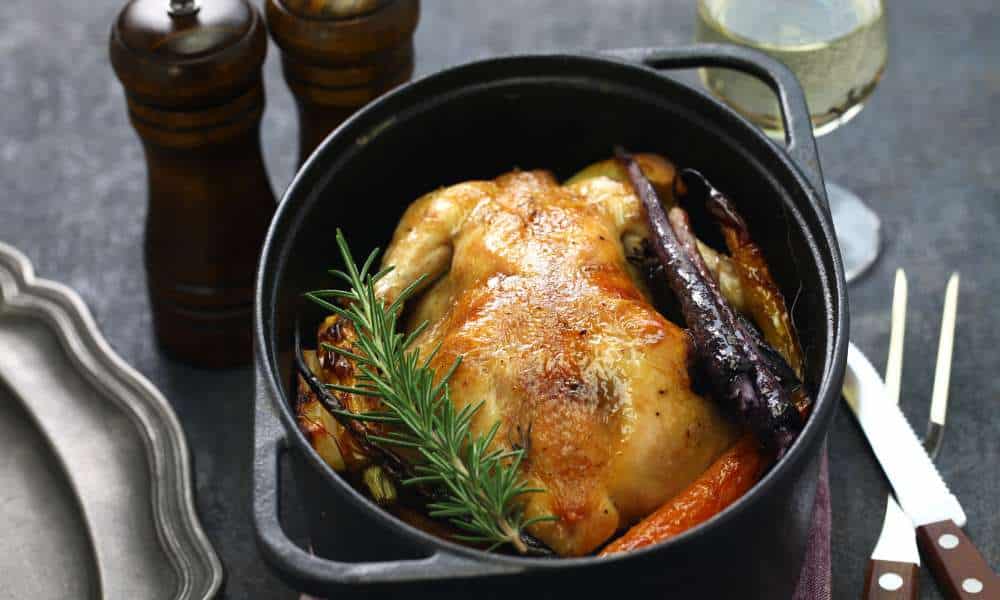Cooking the perfect pot roast requires time, patience, and the right technique, especially when using a Dutch oven. Wondering how long to cook pot roast in Dutch oven? The answer depends on the size of the roast, the cooking temperature, and your desired tenderness. A Dutch oven’s even heat distribution and moisture retention make it ideal for achieving a melt-in-your-mouth pot roast. Typically, cooking low and slow at 300°F for 2.5 to 4 hours ensures a flavorful, tender result. This guide will walk you through timing, temperature, and tips for mastering this classic dish. With these techniques, you’ll serve up a pot roast that’s sure to impress every time.
Why Dutch Ovens Are Perfect for Pot Roast
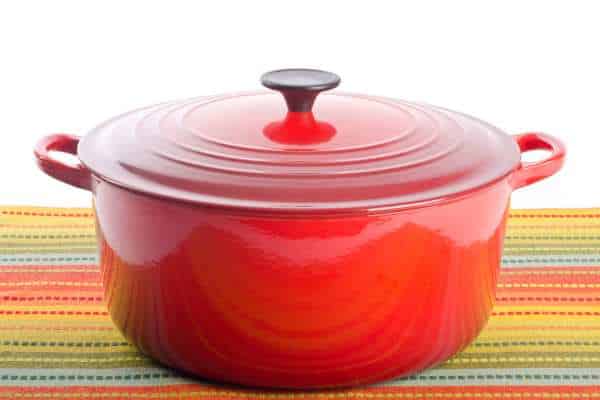
Dutch ovens are the ultimate cookware for making pot roast, offering unmatched versatility and functionality. Their thick, heavy construction ensures even heat distribution, preventing hot spots and allowing the roast to cook uniformly. The tight-fitting lid traps steam, keeping the meat moist and tender while infusing it with rich flavors from the cooking liquids and seasonings. Dutch ovens are also highly durable, making them suitable for stovetop searing and slow cooking in the oven, all in one pot. This seamless cooking process enhances the depth of flavor and texture, delivering a melt-in-your-mouth pot roast every time. For both beginners and seasoned cooks, Dutch ovens are an essential tool for this classic dish.
Factors That Affect Cooking Time for Pot Roast
Several factors affect how long to cook pot roast in Dutch oven. The size and cut of the meat play a major role, with larger roasts requiring more time to become tender. The cooking temperature is another important factor; low and slow cooking at around 300°F ensures the roast becomes juicy and flavorful. Whether you’re cooking with vegetables or adding broth can also influence the cooking time, as they help retain moisture and evenly distribute heat. Additionally, the type of Dutch oven, whether enameled or traditional cast iron, can impact heat retention and cooking efficiency, affecting the overall time required to cook the perfect pot roast.
How to Choose the Right Cut of Meat for a Pot Roast
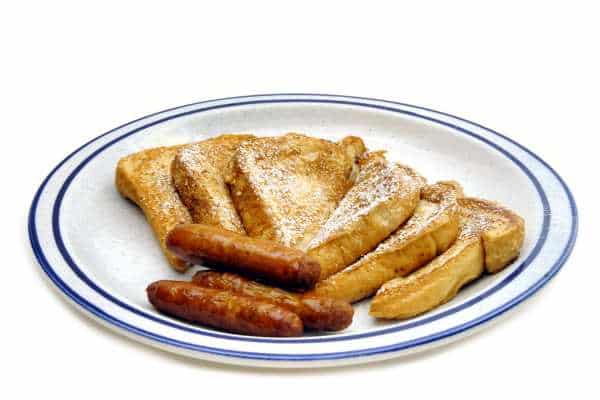
Choosing the right cut of meat is essential for a tender and flavorful pot roast. Opt for cuts with ample marbling and connective tissue, such as chuck roast, brisket, or round roast. These cuts become tender and juicy during the slow cooking process in a Dutch oven. Marbling adds flavor, while the connective tissue breaks down into gelatin, creating a rich texture. Avoid lean cuts, as they can dry out and lack the desired depth of flavor. When selecting meat, consider the size of your Dutch oven to ensure a proper fit. Choosing the right cut sets the foundation for a delicious pot roast that will delight your taste buds.
Preparing Your Pot Roast for Optimal Flavor and Texture
Preparing your pot roast for optimal flavor and texture starts with choosing the right cut of meat, such as chuck roast or brisket, known for their marbling and tenderness. Season the roast generously with salt, pepper, and your favorite spices to enhance its natural flavors. For an added layer of depth, sear the roast in your Dutch oven until all sides are golden brown. This step locks in juices and creates a rich, savory crust. Add aromatic vegetables like onions, carrots, and celery, along with a flavorful liquid like beef broth or wine, to build a delicious base. These preparations ensure a perfectly tender and flavorful pot roast every time.
Cooking Pot Roast on the Stovetop: Time and Tips
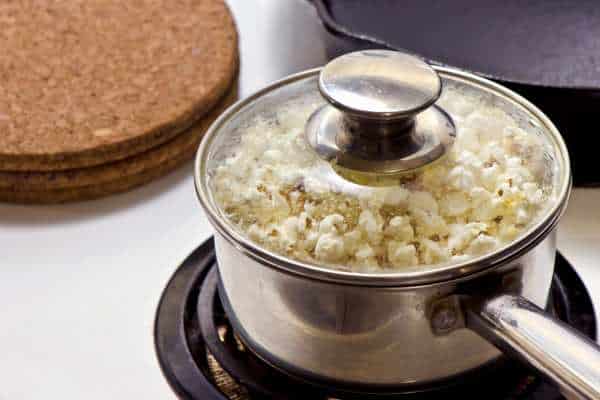
Cooking pot roast on the stovetop in a Dutch oven is a great way to achieve tender, flavorful results. Begin by searing the roast on all sides to lock in the juices, then add your vegetables, broth, and seasonings. Reduce the heat to low and cover the Dutch oven to allow the roast to cook slowly. Typically, a 3 to 4-pound pot roast takes about 2.5 to 3 hours to cook on the stovetop. Check the liquid levels periodically, adding more if needed to prevent drying. For the best results, cook until the meat is fork-tender and infused with the rich flavors of the ingredients. This method ensures a hearty and delicious meal.
How Long to Cook Pot Roast in the Oven for Tender Results
To achieve tender, flavorful results when cooking pot roast in the oven, it’s essential to cook it low and slow. For a 3-5 pound roast, preheat the oven to 300°F and cook for 2.5 to 3 hours. The key to tenderness is maintaining a steady, low temperature to break down the tough fibers of the meat without drying it out. To enhance flavor and moisture, consider searing the roast before placing it in the oven, and add vegetables and broth to the Dutch oven. Keep the pot covered during cooking to trap moisture. Check for tenderness, and your pot roast will be deliciously soft and easy to shred.
Using Low Heat vs. High Heat for Pot Roast Cooking
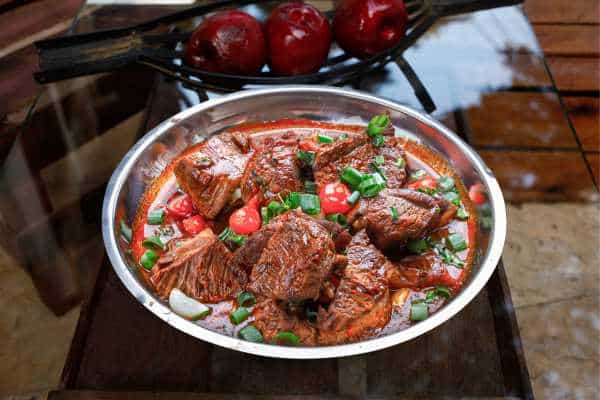
When cooking pot roast in a Dutch oven, choosing between low heat and high heat plays a crucial role in the final result. Low heat, typically around 300°F, is ideal for slow cooking, allowing the meat to become tender and flavorful over time. This method helps break down the connective tissue, making the roast melt-in-your-mouth soft. High heat, on the other hand, speeds up the cooking process but may result in a tougher roast. For the best outcome, it’s recommended to start with high heat for searing, then reduce the temperature to low for a slow and even cook. This combination ensures the perfect pot roast every time.
Adjusting Cooking Times for Larger or Smaller Roasts
When cooking a pot roast in a Dutch oven, adjusting the cooking time for larger or smaller roasts is essential for achieving the perfect tenderness. For a smaller roast, reduce the cooking time by about 30 minutes, as it will cook faster. On the other hand, larger roasts may require additional time, often 30-60 minutes longer, depending on the size. To ensure the roast cooks evenly, it’s important to check the internal temperature. A roast is done when it reaches about 190°F to 205°F for optimal tenderness. With these adjustments, you can tailor the cooking time to your specific roast size, resulting in a perfectly cooked meal every time.
Tips for Checking Doneness Without Drying Out the Roast
To check the doneness of your pot roast without drying it out, use a meat thermometer to ensure it reaches the desired internal temperature. For a tender, medium-rare roast, aim for 130°F, while a well-done roast should reach 190°F to 205°F. Another helpful tip is to gently pierce the roast with a fork or skewer—if it easily slides in and out, the meat is likely tender and done. Avoid opening the Dutch oven frequently, as this can release heat and affect cooking time. Let the roast rest before slicing to lock in moisture and maintain a juicy, flavorful result.
How to Make the Perfect Gravy While Cooking Pot Roast
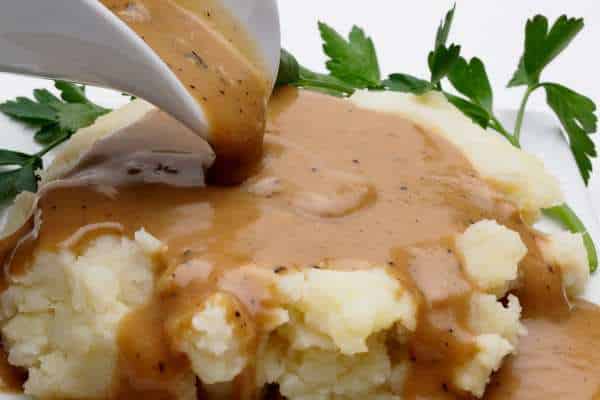
Making the perfect gravy while cooking cook pot roast in Dutch oven is easier than you might think. As your roast cooks, it releases flavorful juices that are perfect for creating a rich, savory gravy. Once the roast is done, remove it from the Dutch oven and set it aside to rest. Use the drippings left behind, adding a little flour to create a roux. Gradually whisk in the remaining liquid from the pot, scraping up any browned bits from the bottom. Simmer until thickened to your desired consistency. This homemade gravy will elevate your pot roast and complement its delicious flavors, making your meal even more satisfying.
Conclusion
Knowing how long to cook pot roast in Dutch oven is essential for achieving the perfect tenderness and flavor. Cooking your roast at a low temperature, typically around 300°F, for 2.5 to 4 hours ensures a juicy and tender result. Be sure to check the roast’s internal temperature and adjust the cooking time based on the size of the meat. A Dutch oven’s ability to evenly distribute heat makes it the ideal cookware for this dish. With patience and the right timing, you can create a mouthwatering pot roast that will impress your family and guests, making it a go-to comfort food for any occasion.

